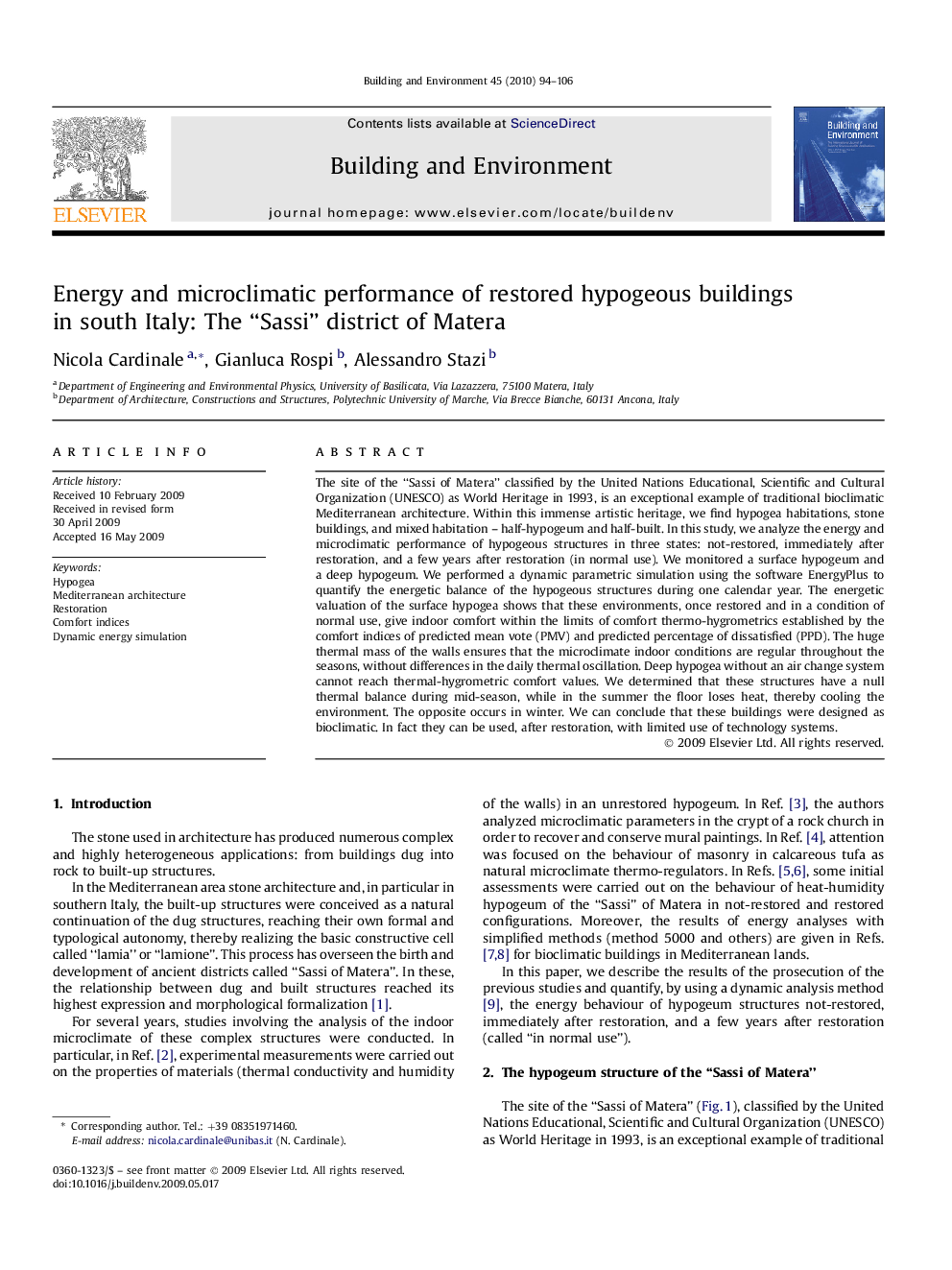| کد مقاله | کد نشریه | سال انتشار | مقاله انگلیسی | نسخه تمام متن |
|---|---|---|---|---|
| 249316 | 502605 | 2010 | 13 صفحه PDF | دانلود رایگان |

The site of the “Sassi of Matera” classified by the United Nations Educational, Scientific and Cultural Organization (UNESCO) as World Heritage in 1993, is an exceptional example of traditional bioclimatic Mediterranean architecture. Within this immense artistic heritage, we find hypogea habitations, stone buildings, and mixed habitation – half-hypogeum and half-built. In this study, we analyze the energy and microclimatic performance of hypogeous structures in three states: not-restored, immediately after restoration, and a few years after restoration (in normal use). We monitored a surface hypogeum and a deep hypogeum. We performed a dynamic parametric simulation using the software EnergyPlus to quantify the energetic balance of the hypogeous structures during one calendar year. The energetic valuation of the surface hypogea shows that these environments, once restored and in a condition of normal use, give indoor comfort within the limits of comfort thermo-hygrometrics established by the comfort indices of predicted mean vote (PMV) and predicted percentage of dissatisfied (PPD). The huge thermal mass of the walls ensures that the microclimate indoor conditions are regular throughout the seasons, without differences in the daily thermal oscillation. Deep hypogea without an air change system cannot reach thermal-hygrometric comfort values. We determined that these structures have a null thermal balance during mid-season, while in the summer the floor loses heat, thereby cooling the environment. The opposite occurs in winter. We can conclude that these buildings were designed as bioclimatic. In fact they can be used, after restoration, with limited use of technology systems.
Journal: Building and Environment - Volume 45, Issue 1, January 2010, Pages 94–106